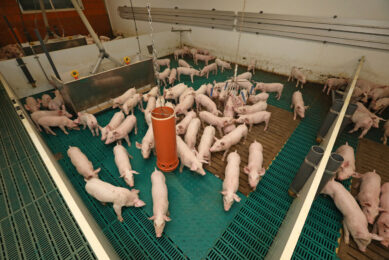Pig health assurance – underlying principles and future direction
DL Hank Harris : Department of Animal Science, College of Life Sciences and Agriculture and Veterinary Diagnostic and Production Animal Medicine, College of Veterinary Medicine, Iowa State University , Ames, IA, USA
Abstract
The work of Tom Alexander centered on controlling swine diseases to benefit the breeding stock and commercial pig producer; and his discoveries and keen insight led to the principles of health assurance used world-wide in the industry today. An overview of his contributions to pig disease research and production, beginning with his involvement as an organizer of the first IPVS Congress in 1969, and exemplified by his paper delivered at that meeting concerning the development of disease-free pigs, will be followed by a look to the future.
Introduction
“Important principles may, and must be inflexible“
— Abraham Lincoln
“The principles of disease control must not be set in stone. They are really guidelines which should be under constant re-evaluation and modification. But modification of a principle or action contrary to a principle should not be taken by any department or country without good reason and only after consultation and agreement among the appropriate parties.
— Tom Alexander, PIC Veterinary Liaison Meeting, Schlesvig, Germany 1991 “
The contradiction between these two quotations, one by a great politician and one by a great contributor to swine medicine exemplify Tom’s career as both an academician and as an early proponent of what we now refer to as evidenced-based medicine (1,6,52).
Let me explain by presenting an example – Tom was a student and early adopter of the Specific Pathogen-Free (SPF) program originated by George Young in the U.S. (61). In fact, Tom’s paper presented at the fi rst IPVS meeting in 1969 and co-authored by Ken Woolley (founder of Pig Improvement Company, now known as PIC) was entitled, SPF Swine Repopulation (15). By that time, Tom had designed and operated the first experimental primary SPF procurement unit in Ontario, Canada and his paper was the first introduction to the concept in Europe. It was Tom’s association with Ken and PIC which caused him to realize that strict adherence to the SPF principles would not be practical for either a breeder or a commercial operation. And although SPF organizations are still in existence today in some countries such as Switzerland, Denmark and at a minor level in North America, they have had to adopt Tom’s approach to flexibility in the principles of health assurance. One could further expand this example by stating that the SPF association is a political organization while practical health assurance programs are carried out under the context of a profitable business. To paraphrase Tom’s philosophy, which has now been adopted by virtually all breeders and commercial operations of any size world-wide, health assurance principles must be adhered to as long a they don’t bankrupt the business.
It seems only fitting that at the first IPVS meeting to be held in Canada that we honor Tom Alexander and give him credit for establishing the first SPF units in Canada and bringing these procedures to Europe via the first IPVS meeting held in Cambridge, England.
For full presentations see attached pdf











